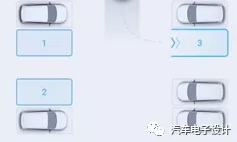From the very beginning, various automobile companies have spared no effort in packaging automatic parking technology, which can be seen as an absolute boon for new drivers in a sense.
As shown in the figure below, automatic parking technology can be divided into multiple stages. It’s common for people to assume that cars can simply park themselves, and owners can just get out of the car and run away.
In fact, with the development of intelligent technology, it’s expected to become the focus of every car company’s efforts to achieve independent low-speed parking within 3-5 years. Currently, automatic parking technology is in the first and second stages.
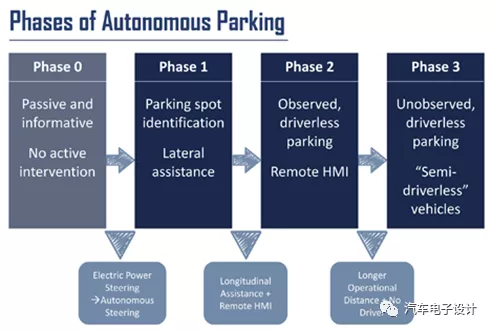
Smoke and I have used the automatic parking function of the P7, and from our experience, it works well in many places, but there are also some limitations in some places. Here is a brief summary of our experience:
1) Going to public areas where parking spaces are relatively large, such as park parking lots (Minhang Sports Park, Jiuke Oasis Park, Tongli Wetland Park) and various commercial plazas, are no problem.
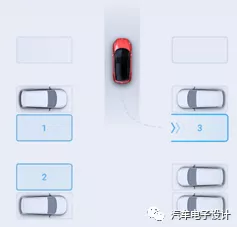
2) Going to some companies where there are diagonal lines in the parking lot, it can be difficult to find parking spaces. I have encountered a situation where the car stopped parking halfway because it considered there was an obstacle due to the narrow space, as shown in the following picture.
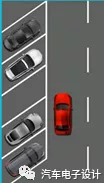
3) Like the situation mentioned above, in the two communities we lived in, the parking spaces in the older community are too small, but it’s possible to use the automatic parking function in the newer one.
Note: Both of our cars only have one official parking space and we have to reverse into it one after another.
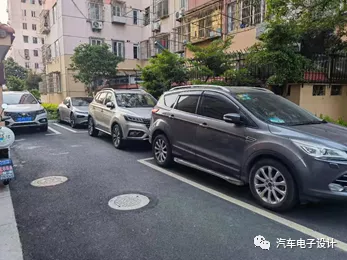
Let’s talk about the autonomous parking of the Xpeng P7, an intelligent component of the automobile. At the beginning, its main selling point was optimizing the automatic parking function. Xpeng put a lot of effort into the research of user experience in the early days of intelligent technology. This system uses a fusion solution of ultrasonic waves and cameras, and can support parking between two cars and in parking spaces marked on the ground.
Actually, automatic parking can be divided into several steps. The first part is to find a parking space.
The first step of many early self-parking systems can be quite troublesome, as the vehicle needs to autonomously search for a parking spot, and the user needs to repeatedly press the “search for parking spot” button in the car to help the vehicle recognize parking spots.
In the design of P7, there are two ways to initiate the search for a parking spot. One is to use voice commands to initiate self-parking, and the other is to click the button “P” on the first page of the center console screen. In both cases, the parking spots found will be displayed in real-time on the center console screen / instrument panel.
While the system is searching for a parking spot, the available parking spots will be released and displayed in real-time, and the user can choose the desired parking spot, which will usually be marked with different numbers, such as 1, 2, 3, etc.
The second step is for the system to recognize the parking spot. Most semi-automatic systems require the driver to stare at the screen and follow the instructions step by step to shift gears, brake, and accelerate. As shown in the above video, after clicking the “start parking” button on the prompt interface, the system will automatically start parking after releasing the brake.
During the parking process, the center console screen will display the current gear, remaining distance, and obstacle warnings in real-time, and while it is important to pay attention at the beginning, it is not necessary to be overly concerned during normal parking, as the system will automatically shift to the P gear after parking.
Overall, from an operational standpoint, the advantages of the self-parking function of the XPeng P7 are quite obvious.
1) The parking operation is very convenient and easy, and the entire process can be initiated with just one operation, which is suitable for people like Yanyan who are sensitive to multi-step operations.
2) There are several ways to initiate the function, including active voice commands, clicking on the center console screen, and passively shifting to the R gear.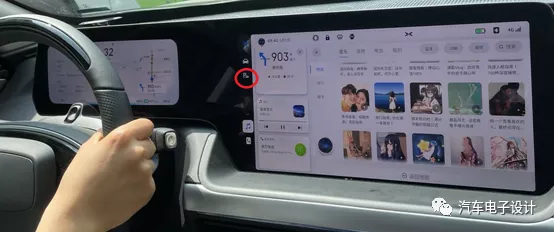
3) The parking space display is clear, and after the system has identified a parking space, it prompts the user to activate this function through active voice and screen prompts. The available parking space, parking space size, and parking space type are clearly displayed on the central control screen, which is compatible with the panoramic view display.
4) Some information during the parking process, including gear position display, remaining distance, parking process animation, and surrounding obstacle information, is displayed clearly. Of course, in the event of encountering obstacles during the parking process, there will be a temporary pause and either the obstacle will disappear or the user can take over directly.
Overall, the automatic parking function of the XPeng P7 has made great improvements in parking spot recognition, parking efficiency, parking effect, and interaction experience. Many of the earlier automatic parking functions offered by other automakers were unable to recognize parking spaces, had slow parking speeds and required frequent corrections or were complicated and difficult to use.
Through actual tests of the P7’s automatic parking function, we have seen a significant improvement in the accuracy of recognition, parking speed, and ease of use, directly making this function a must-have and standard operation for the P7. Compared to the Model 3 and other new carmaking companies, XPeng has invested a lot of time in this area, and the results have been quite good.
Different vehicles will have different performance results with automatic parking. Choosing a suitable parking position and a good system allows users to use this feature with confidence within a certain range, which is also becoming a gradually necessary configuration for car owners.
This article is a translation by ChatGPT of a Chinese report from 42HOW. If you have any questions about it, please email bd@42how.com.
